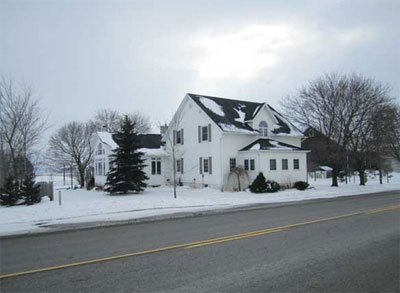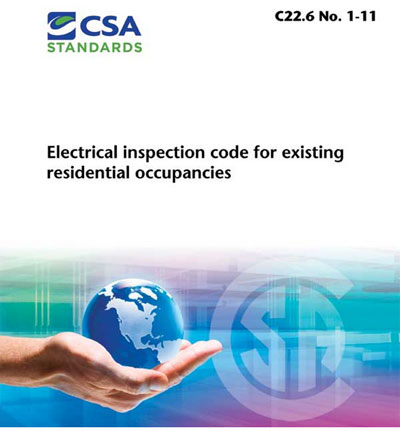
The Electrical Inspection Code for Existing Residential Occupancies will be a National Standard of Canada, published in English and French. Although it has been drafted using Code format and language, this standard is a voluntary standard until adopted as regulation by an authority having jurisdiction. It was developed by a Technical Subcommittee with members representing the following industries and interest areas: the International Association of Electrical Inspectors, insurance, regulatory, fire marshals, forensic investigation, electrical product and wire and cable manufacturers, contractors, education, consumers, home inspectors, pool and hot tub industry, and certification organizations.
Aging electrical systems have been the subject of much research, and we would like to acknowledge David Dini of Underwriter Laboratories Inc. and the NFPA Fire Protection Research Foundation for their paper “Residential Electrical System Aging Research Project ”that helped frame some of the needs addressed by the new standard.

The body of the standard contains the main criteria for the evaluation of residential occupancies with related explanatory notes in Annex A. Annexes B and D feature a model checklist and guide for application and enforcement. The standard is limited to existing installations and does not overlap or conflict with the Canadian Electrical Code, Part I. The scope explicitly states that Electrical Inspection Code for Existing Residential Occupancies does not cover new installations or maintenance as covered by the Canadian Electrical Code, Part I.
The Canadian Electrical Code, Part I was first published in 1927. Since 1927, twenty-one editions of the code have been published and the next edition will be published January 2012. Throughout the years, the code has constantly evolved to improve the minimum level of safety. However, this evolution has made it more difficult for inspectors who must inspect existing installations constructed under previous editions of the Code. Most jurisdictions, when inspecting existing installations, will inspect to current code in the absence of any other requirements. The Electrical Inspection Code for Existing Residential Occupancies fills this need by providing a common standard for inspection. To assist with inspection of older installations, the standard features Annex C with a chronological history of code changes relative to residential occupancies. For example, readers will learn from Annex C that the Canadian Electrical Code first required a bonding connection for all non-metallic wiring methods and outlets in the 1958 edition.
Annex E provides a list of minimum safety requirements that the authority having jurisdiction can apply to existing residential occupancies. As an example, Clause E.4.2 would require receptacles installed outdoors and within 2.5 m of grade, other than automobile heater receptacles located in parking lots and intended solely for use as automobile heater receptacles, to be protected by a ground-fault circuit interrupter of the Class A type. It is recognized that the application of requirements in Annex E could be controversial, as they may necessitate upgrading of existing installations. For this reason, Annex E and Clause 4.5 have been structured to allow an authority adopting the standard as regulation to easily include or exclude the minimum safety requirements contained in this Annex.










Find Us on Socials